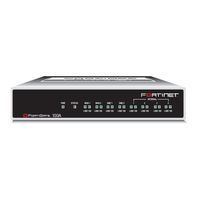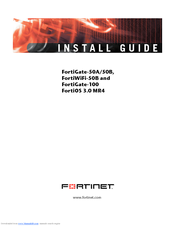Fortinet FortiOS 3.0 MR4 Firewall Manuals
Manuals and User Guides for Fortinet FortiOS 3.0 MR4 Firewall. We have 2 Fortinet FortiOS 3.0 MR4 Firewall manuals available for free PDF download: Install Manual
Fortinet FortiOS 3.0 MR4 Install Manual (92 pages)
FortiGate-60 series FortiOS 3.0 MR4
Table of Contents
Advertisement

